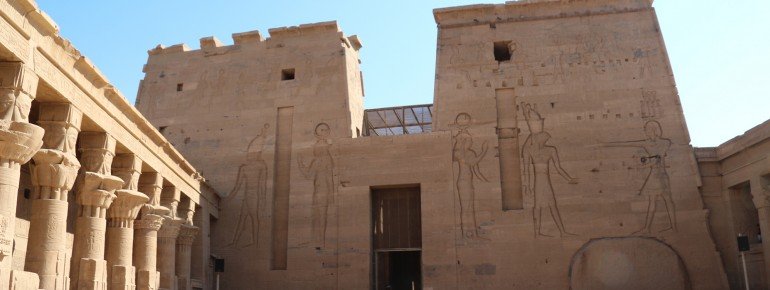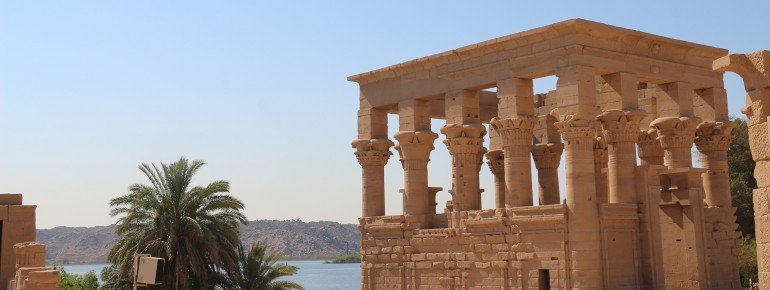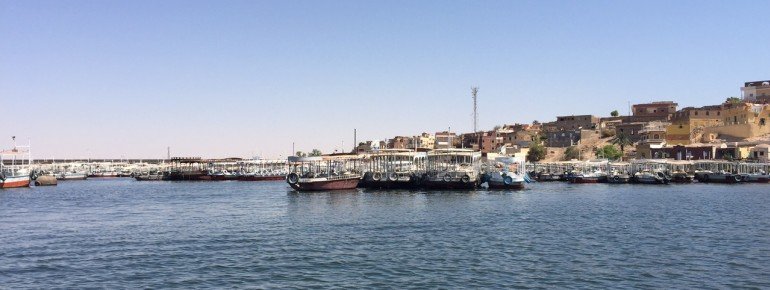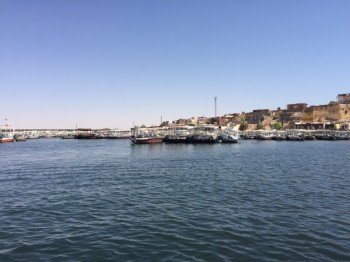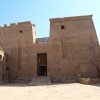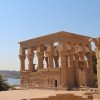Contents
Description
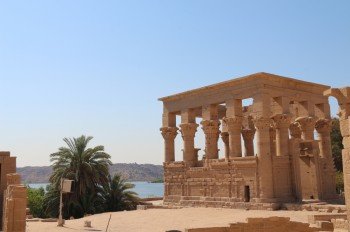
The Temple of Philae is located on the island of Agilkia in Lake Nasser near Aswan. As its name suggests, the temple was originally located on the neighboring island of Philae, which was flooded during the construction of the reservoir. The temple was therefore moved about 600 meters to the northwest. The main building was dedicated to the ancient Egyptian goddess Isis. There are numerous other small buildings around it, such as the Drajan kiosk or the small Hathor temple.
The Osiris myth
According to an ancient Egyptian legend, the goddess Isis found her husband Osiris on Philae after he had been killed by his brother Seth, dismembered and his parts scattered all over the land. According to the Osiris myth, Isis found and reassembled all the body parts.
Architecture of the complex
As the complex has been repeatedly extended with outbuildings and chapels over the course of history, it now consists of several complexes. The entrance to the main temple is marked by a pylon around 20 meters high and 38 meters wide, as is common in ancient Egyptian temple complexes. This is followed by a courtyard and a second pylon. Behind it is a portico with ten columns. They were once richly painted, but as the temple was flooded after the construction of the old Aswan Dam, the decorations are no longer preserved. In addition to ancient Egyptian reliefs, Coptic crosses from the sixth century AD can also be found on the walls. During this time, the temple was converted into a church. The sanctuary is located in the center of the main temple. Here you can still see the pedestal on which a barque with the image of the goddess Isis stood in ancient times.
Historical Information
Isis cult in the Temple of Philae
The oldest surviving evidence of the Temple of Philae, often referred to as the “Pearl of the Nile”, dates back to the period between 379 and 360 BC. Even when Christianity was declared the state religion in Egypt in 391 AD, followers of the goddess Isis continued to worship here. Emperor Justinian I therefore had the temple closed by force in 535 and converted it into a church. During this time, numerous ancient reliefs on the temple façades were destroyed.
Relocation of the temple complex
When the old Aswan Dam was built at the beginning of the 20th century, the temple was under water for several months. During the construction of the new dam in the 1970s, the Nubians who had settled here were relocated and it was decided to move the temple to a higher site, namely to the neighboring island of Agilkia. The buildings were sawn into a total of 37,363 blocks and then reassembled true to the original. The temple complex has been a UNESCO World Heritage Site since 1979.
Interesting facts
- The day pass at Temple of Philae is EGP550 making it one of the 5 cheapest tourist Attractions in Egypt.
How to get there
The temple is located in the middle of Lake Nasser on the island of Agilkia. It can only be reached by motorboat from the pier in Aswan. Tourists are usually taken there accompanied by an experienced guide.

